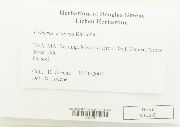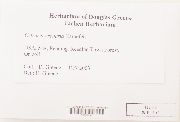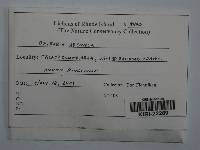
- Home
- Search
- Images
- Species Checklists
- US States: O-Z >
- US National Parks
- Central America
- South America
- US National Parks
- Southern Subpolar Region
|
|
|
|
Family: Parmeliaceae
Sand-loving Iceland Moss
|
MB# 341699 TYPE. UNITED STATES. Michigan, Mackinac County, on sandy soil, 23.IX.1949, H.A. Imshaug 5449 (LD, holotype). Description. Lichenized fungus. Thallus foliose, subfruticose forming greenish or brownish tufts (1-)3-4(-7) cm wide. Lobes (0.5-)1-4(-12) mm wide, dichotomously branched, flat to weakly involute (curled downward-inward) with pseudocyphellae and marginal cilia; lower surface paler than upper surface. Photobiont trebouxioid alga. Ascomata lecanorine apothecia, rare, marginal on lobe ends; disk red-brown, 0.5-3 mm diam. Paraphyses 40-50 x 1-2 μm. Asci 35-50 x 10-12 μm, 8-spored; ascospores simple, hyaline, ellipsoid, 5.5-6 x 3.5-4 μm. Pycnidia on tips of marginal projections, with cortical tissue beneath, rare; conidia oblong citriform, ca. 5 x 1 μm. Chemistry. Spot tests negative; no substances detected. Substrate and Habitat. On sandy soil in open areas. Distribution. Eastern and central North America; in North Carolina found in the Blue Ridge ecoregion. Literature Kärnefelt, I. (1977) Three new species of brown fruticose Cetraria. Botaniska Notiser 130: 125-129 (original description). Kärnefelt, I., J.-E. Mattsson & A. Thell, A. (1993) The lichen genera Arctocetraria, Cetraria, and Cetrariella (Parmeliaceae) and their presumed evolutionary affinities. The Bryologist 96(3): 394-404. |
|
|
|






































































